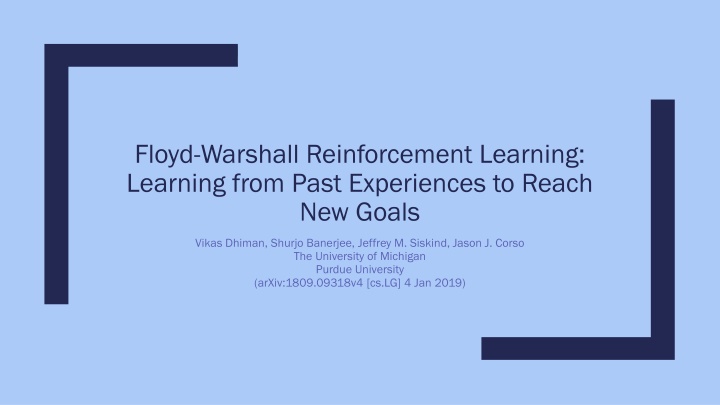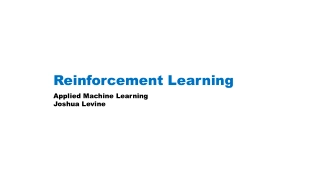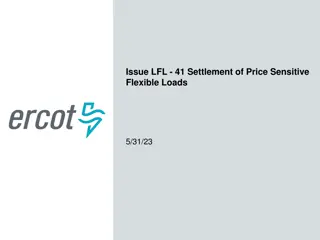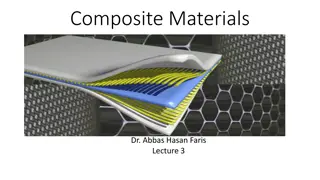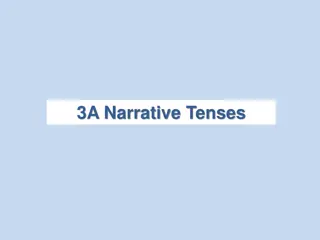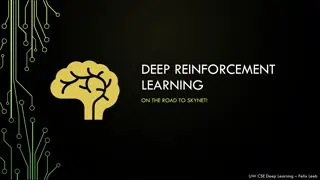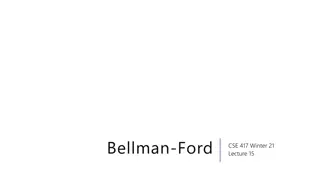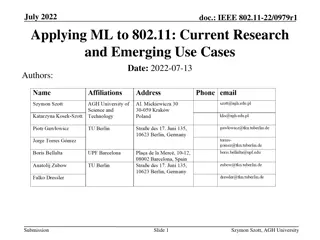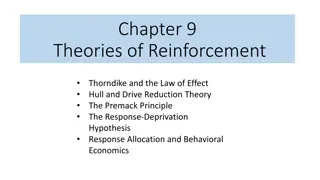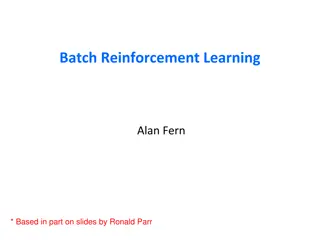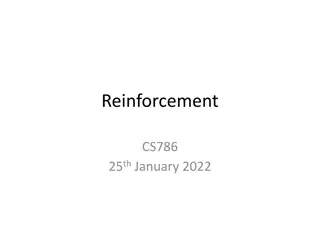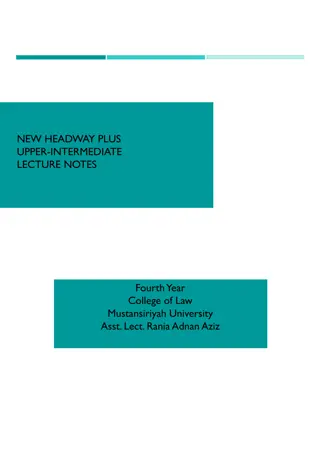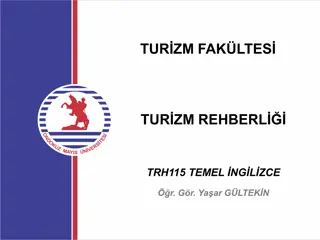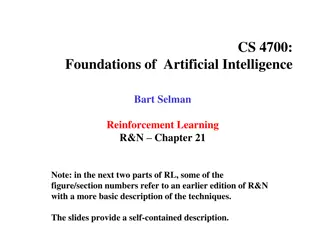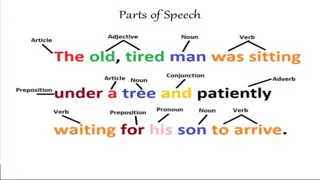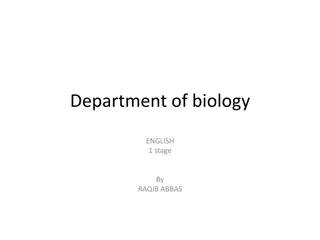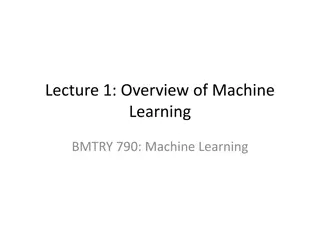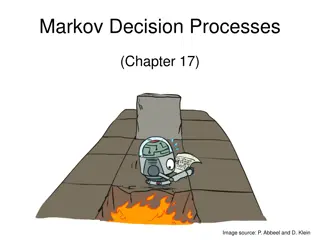Floyd-Warshall Reinforcement Learning: Learning from Past Experiences
This research paper introduces Floyd-Warshall Reinforcement Learning (FWRL) as a novel algorithm to address the limitations of model-free Reinforcement Learning (RL) in multi-goal domains. It explores how FWRL improves upon existing RL algorithms by leveraging a triangular-inequality-like constraint within the space of universal goal-conditioned value functions (UVFs). The study delves into the model-free and model-based RL approaches, highlighting the importance of transferring learned information while adapting to dynamic goal locations in various environments.
Download Presentation

Please find below an Image/Link to download the presentation.
The content on the website is provided AS IS for your information and personal use only. It may not be sold, licensed, or shared on other websites without obtaining consent from the author.If you encounter any issues during the download, it is possible that the publisher has removed the file from their server.
You are allowed to download the files provided on this website for personal or commercial use, subject to the condition that they are used lawfully. All files are the property of their respective owners.
The content on the website is provided AS IS for your information and personal use only. It may not be sold, licensed, or shared on other websites without obtaining consent from the author.
E N D
Presentation Transcript
Floyd-Warshall Reinforcement Learning: Learning from Past Experiences to Reach New Goals Vikas Dhiman, Shurjo Banerjee, Jeffrey M. Siskind, Jason J. Corso The University of Michigan Purdue University (arXiv:1809.09318v4 [cs.LG] 4 Jan 2019)
Outline 1. Introduction 2. Related work 3. Method 4. Experiments 5. Conclusion
Introduction Reinforcement Learning Reinforcement Learning (RL) Reinforcement Learning (RL) allows for agents to learn complex behaviors in a multitude of environments while requiring supervision only in the form of reward signals.
Introduction Problem Consider multi multi- -goal task goal task that involve static environments and dynamic goals. There are two types of RL algorithms Model Model- -free RL free RL cannot transfer learned information when goal location changes, but achieves high asymptotic accuracy. Model Model- -based RL based RL can transfer learned information to new goal location, but limited by the fact that small errors in modelling.
Introduction Floyd-Warshall Reinforcement Learning Floyd Floyd- -Warshall Warshall Reinforcement Learning (FWRL) Reinforcement Learning (FWRL) Improve the limitations of model-free RL in multi-goal domains. Learns higher reward strategies in multi-goal task than model-based RL.
Related work Goal-conditioned value functions Introduced by (Schaul et al., 2015), universal goal-conditioned value functions (UVFs) measures the utility function of achieving any goal from any state in an environment. In Hindsight Experience Replay (HER), Andrychowicz et al. (2016) learn UVFs from previous episodes accounting for when the goal location has not been achieved. Pong et al. (2018) propose Temporal Difference Models (TDM) combines model- based and model-free algorithms by modeling the learning as a constrained objective function using a horizon dependent goal-conditioned value function. In contrast to all the above works, FWRL is a novel algorithm for learning UVFs via leveraging a triangular-inequality like constraint within the space of these functions.
Background Dijkstra Dijkstra (Dijkstra, 1959) is a shortest path finding algorithm from a given vertex in the graph. Consider a weighted graph G = (S, E), with S as the vertices and E as the edges.
Background Floyd-Warshall The Floyd-Warshall algorithm (Floyd, 1962) is a shortest path finding algorithm from any vertex to any other vertex in a graph.
Background Q-Learning Q-learning (Watkins and Dayan, 1992) is a reinforcement learning (RL) algorithm that allows agent to explore environment and simultaneously compute maximum reward paths. An RL problem is formalized as an Markov Decision Process (MDP). The Q-learning algorithm works by updating the Q-function using the Bellman equation.
Markov Decision Process (MDP) An RL problem is formalized as an Markov Decision Process (MDP).
Bellman Equation A Bellman equation is a necessary condition for optimality associated with the mathematical optimization method known as dynamic programming. It writes the "value" of a decision problem at a certain point in time in terms of the payoff from some initial choices and the "value" of the remaining decision problem that results from those initial choices.
Background Q-Learning Q-learning works by maintaining an action-value function Q S ? , which is defined as the expected return from a given state-action pair.
Method Floyd-Warshall (FW) function We define the Floyd-Warshall (FW) function as the expected cumulative reward on going from a start state to an end state within an episode.
Method Floyd-Warshall (FW) function We define the optimal FW-function as the maximum expected value that a path between a start state and a goal state. The optimal policy can be computed from FW-function similar to the Q-learning algorithm.
Method Floyd-Warshall (FW) function When the policy is optimal, the Floyd-Warshall function must satisfy the constraint.
Experiments Four room grid world The agent can occupy any one of the white blank squares. Agents can act by moving in four directions {up, down, left, right} to reach the goal. The wind, indicated by arrows, increases the probability of the agent randomly going in the direction of the arrow by 0.25.
Metrics Reward: The reward earned per episode by the agent. Distance-Inefficiency: The ratio of the distances travelled by the agent during an episode to the sum of the shortest path to the goal at every point of initialization.
Baselines QL: This version of Q-Learning does not use the prior knowledge of the goal state, but depends upon the goal reward to build a new Q-function in every episode. QLCAT: We concatenate the state with the goal location and retain the learned Q- function function across episodes. Model-based RL: We implement a simple version of tabular model-based RL where we maintain a transition count data-structure T(s |s, a).
Results on grid world Left: Distance-Inefficiency (Lower is better) Right: Reward (Higher is better)
Qualitative results: Visualization of value-function in H-Maze
Conclusion FWRL allows us to learn a goal conditioned action-value function which is invariant to the change in goal location as compared to the typical Q-learning. Many goal conditioned tasks like navigation and robotic pick and place can benefit from this framework.
END Thank you for listening
